Obsidian: Discover Healing Wonders,Types and Benefits [Guide]
What is Obsidian?
Obsidian is cool intrusive rock, the kind that erupts from volcanoes and is formed from magma. Because it never truly emerged from that molten magma into the open, it is known as intrusive. Obsidian is an igneous rock that forms when molten rock cools down extremely quickly. So fast, in fact, that the atoms are unable to coordinate to form a stable crystalline structure. It’s similar to “no time to chill” in a rock context.These stones are different types and all types have different uses.
- Mineraloid Nature:
- This stone is a mineraloid, not just a rock, possessing natural occurrences but lacking typical crystallinity.
- Volcanic Origin:
- Formed through the rapid cooling of lava from active volcanoes, obsidian boasts a natural glass-like appearance.
- Hematite Influence:
- Hematite, or iron oxide, contributes to these occasional reddish-brown undertones, with the primary color being jet-black.
- Golden Shimmer:
- In some instances, this stone may exhibit tiny bubbles of gas, providing a golden shimmer to its appearance.
- Unique Emergence:
- This stone emerged as a result of the rapid cooling of lava, creating a unique and distinctive material.
History:
This stone has a fascinating history and has long been considered the gold standard of stone tools and weapons. We’re talking about Anatolia, or modern-day Turkey, back in 6500 BC, to be exact. We get the impression from archaeology that people were early adopters of these stone trend.
- Ancient Egyptian Use:
- Jewelry of this stone was highly valued in ancient Egypt, where it was crafted into jewelry and extravagant decorations.
- Aztec Ceremonial Knives:
- The Aztecs in Mesoamerica utilized obsidian to create ceremonial knives, showcasing its importance in their rituals and ceremonies.
- Greek Blades:
- In ancient Greece, this stone was traded and used for crafting blades, including swords and daggers, demonstrating its versatility and utility.
- Multipurpose Cultural Significance:
- This stone served as a multipurpose stone across various cultures, being molded into different shapes and fulfilling diverse functions.
The worst part is that, over time, every society added its own unique touch to the process of working with this stone. This rock seemed to have the spirit of a chameleon, changing to suit the imaginative ideas of those around it.
Meaning:
This is incredibly fascinating.The Aztecs were brilliant at it; they turned these flat this crystal sheets into mirrors that sparkled. Like, picture using a volcanic glass mirror to gaze into the mysterious unknown. They seemed to be experiencing some sort of extraordinary magic.
| Aspect | Details |
|---|---|
| Ancient Use | This stone historically used to enhance mystical properties in axes and arrowheads, also utilized in mirror creation |
| Mystical Mojo | Believed to add mystical energy, potentially enhancing the effectiveness of weapons |
| Obsidian Properties | This stone considered a superhero stone with protective qualities |
| Grounding Abilities | Grounds from the base chakra to the earth’s center, creating a shield against negativity |
| Clarity Wizard | This stone provides significant mental clarity, cutting through mental fog |
| Soul Penetration | Penetrates the soul deeply, facilitating a connection to earlier incarnations |
| Time-Traveling Healer | Functions like a time-traveling healer, addressing old wounds and traumas to bring clarity to the present |
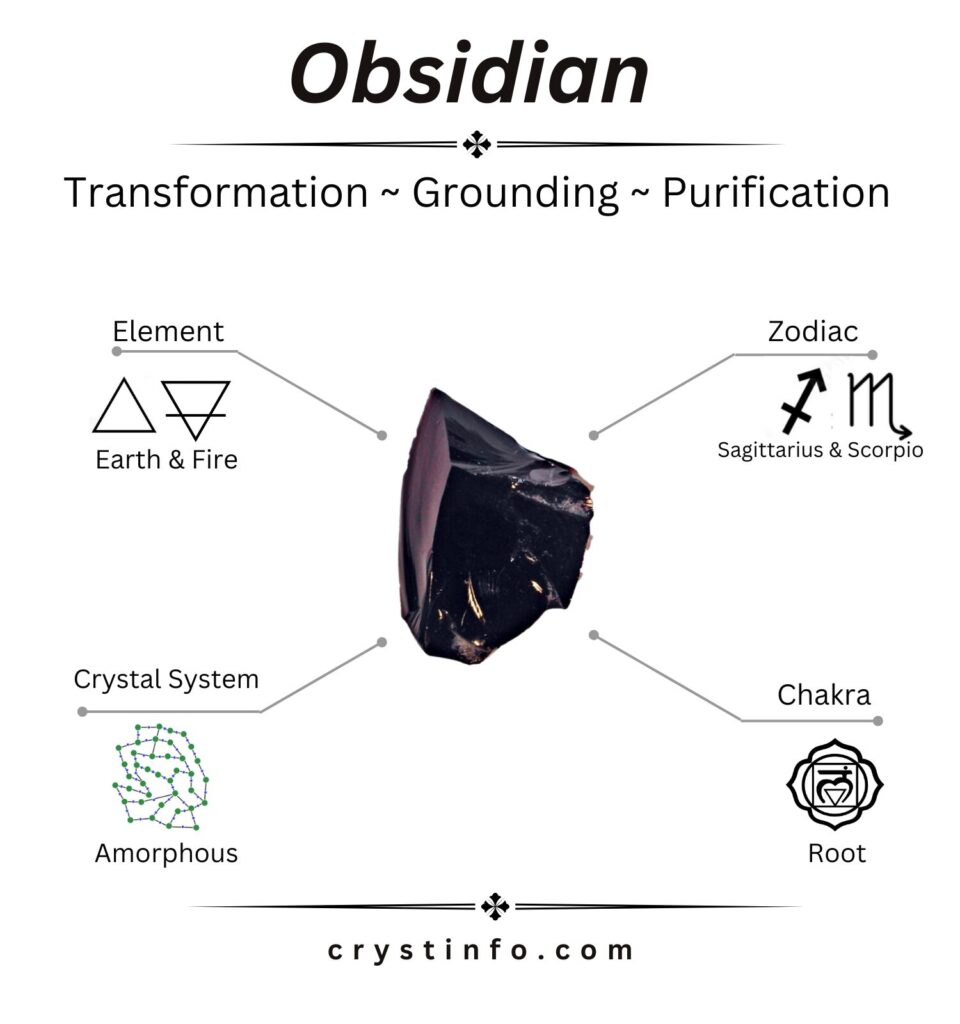
- Enhancement of Truthfulness:
- This stone is associated with improving veracity, encouraging truthful communication, and alleviating tension and stress in the mind.
- Personal Growth Stone:
- This stone is likened to a rock for personal growth, opening up new horizons and supporting growth on various levels.
- Historical Use in Armaments:
- In the Paleolithic Era, obsidian was primarily utilized for lethal armaments such as arrowheads and spears.
- Diversification into Housewares:
- Over time, people recognized the versatility of this stone and expanded its use beyond weapons to create housewares, kitchen tools, and other practical items.
This stone was in vogue among shamans and healers because of its spiritual properties. And notice that Pliny the Elder, a Roman naturalist, omitted the word “obsidian” from his Natural History in 77 AD. It seems that he compared obsidian glass to a stone that a man by the name of Obsidius discovered in Ethiopia.
Healing Properties:
You’ll be shocked at how drastically this stone vibes can alter your life! It really is a recipe for contentment, patience, self-love, and serenity. This srystal is more than just a rock; it resembles a crystal-form life coach.
- Acceptance of Truth:
- This crystal symbolizes acceptance of both positive and negative aspects, serving as a guide through the dark and light parts of one’s soul.
- Support in Dark Moments:
- This stone acts as a mystical guide during challenging times, encouraging individuals to turn away from darkness and embrace approaching love and light.
| Category | Obsidian Meanings |
|---|---|
| Life Aspects | It brings peace, self-love, patience, and happiness. It embodies the truth in both light and darkness, aiding understanding of one’s soul. It helps turn away from darkness and embrace light and love. |
| Emotional Healing | Provides mental clarity, clears confusion, and facilitates a deeper understanding of oneself. Liquifies emotional blockages and past traumas. Encourages qualities of compassion and strength. Removes stress, fatigue, and guilt from the body, promoting moderate healing. Reveals secrets and answers profound questions about life and love. Manifests the meaning of life’s mysteries. |
| Mind | Protective and aids deep healing. Keeps one on the clear path by warding off negative emotions and mindset. Fosters focus and determination. Assists in letting go of disharmony accumulated in daily life. |
| Body | Supports digestion and detoxification. Reduces pain from arthritis, joint problems, and cramps. Warms lower extremities. Has strong healing energy and aids in overcoming addictions, eating disorders, and negative behaviors. |
| Spirit | Sought after by light healers and crystal gazers for its spiritual properties. Grants depth to emotional nature and assists with overcoming obsessions. Cleanses the atmosphere of negative spiritual influences and provides protection against psychic attacks. |
Types:
This stone comes in a variety of forms, each with a distinct appearance. Among the most popular varieties of these stones are:
1.Black obsidian:
Black stone is like the rockstar of obsidian So, it’s the most common type, and it’s rocking that classic jet-black vibe. Although, sometimes it’s got this cool dark gray or brown tint, you know, just to keep things interesting.
- Black Stone in Jewelry and Tools:
- Black stone is not just admired for its cool appearance; it is actively transformed into jewelry and sharp tools, showcasing its versatility.
- Rocking a Black Stone Necklace:
- The idea of wearing a black stone necklace is presented, emphasizing the fashionable and aesthetic appeal of black stone in jewelry.
- Amazing Science Behind Black Stone:
- The science behind black stone is highlighted, indicating that it forms when felsic lava cools down rapidly, resulting in its distinctive properties.
- Felsic Lava’s Quick Cooling:
- Black stone, specifically black obsidian, is explained to form when felsic lava cools down quickly, contributing to its unique characteristics.
- Amorphous, Crystalline Structure:
- The atoms in the lava decide to form an amorphous, crystalline structure, showcasing the distinctive way in which black obsidian solidifies.
- Atoms Doing Their Own Thing:
- The atoms in the lava are described as doing their own thing, congealing into a crystalline structure independently of the typical crystal formation.
- Glossy, Glassy Look of Black Obsidian:
- The glossy, glassy look of black obsidian is attributed to its amorphous, crystalline structure formed by the rapid cooling of felsic lava.
- Versatility in Jewelry and Tools:
- Black stone’s versatility is emphasized, being utilized not only for its aesthetic appeal in jewelry but also for its practical use in the creation of sharp tools.
- Unique Formation Process:
- The unique formation process of black obsidian sets it apart from other stones, contributing to its glossy and glassy appearance.
- Fashionable and Functional:
- Black stone is portrayed as both fashionable in jewelry and functional in the crafting of sharp tools, showcasing its dual appeal.

| Property | Description |
|---|---|
| Name | Black Stone |
| Composition | Volcanic glass, primarily composed of silicon dioxide (SiO₂). |
| Color | Solid black |
| Crystal System | Amorphous (lacks a crystal structure) |
| Hardness | 5 – 5.5 on the Mohs scale |
| Luster | Vitreous |
| Transparency | Opaque |
| Cleavage | None |
| Fracture | Conchoidal |
| Specific Gravity | 2.35 – 2.38 |
| Streak | White |
| Occurrence | Found in volcanic regions and areas with past volcanic activity. |
| Uses | – Ornamental Use: Carved into beads, cabochons, and figurines for jewelry and ornamental items. |
| – Cutting Tool: Historically used for cutting and shaping objects due to its sharp edges. | |
| – Metaphysical Beliefs: Associated with protection and grounding. |
2.Mahogany Obsidian:
Mahogany stone is all about that red or brown life, so it’s not your usual black vibe. Picture a rich, deep reddish-brown hue; that is the beauty of mahogany stone on display.
- Similar Formation Process as Black Stone:
- Mahogany stone is described as the rebellious sibling of black stone, sharing the same formation process where felsic lava cools quickly.
- Twist in the Formation Process:
- A twist in the formation process is highlighted, indicating that while the cooling process is similar to black stone, mahogany stone has a unique element.
- Higher Presence of Iron Oxide:
- The distinctive brown or reddish-brown color of mahogany stone is attributed to a higher presence of iron oxide compared to black stone.
- Iron Oxide’s Bizarre Connection to Rust:
- The connection between iron oxide and rust is emphasized, describing it as an extremely bizarre yet interesting relationship.
- Iron Oxide Vibes as True Stars:
- Iron oxide vibes are identified as the true stars, playing a crucial role in giving mahogany stone its strikingly rich colors.
- Colorful Contribution of Iron Oxide:
- The brown or reddish-brown kick in mahogany stone’s color palette is credited to the colorful contribution of iron oxide during its formation.
- Cozy Interaction of Magma and Rocks:
- The magma’s interaction with mineral-rich rocks and sediments in the Earth’s crust is mentioned as part of the formation process.
- Accompaniment of Sediments in Eruption Process:
- Sediments are noted as accompanying the eruption process, contributing to the overall composition and appearance of mahogany stone.
- Unique Formation with Rich Colors:
- Mahogany stone’s unique formation process is highlighted, resulting in its distinctive appearance with rich and earthy colors.
- Visual Appeal from Iron Oxide:
- Iron oxide is acknowledged for its role in enhancing the visual appeal of mahogany stone, adding depth and vibrancy to its coloration.
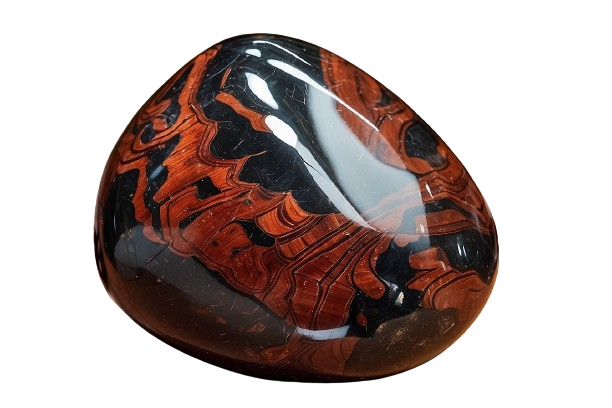
| Property | Description |
|---|---|
| Name | Mahogany Obsidian |
| Composition | Volcanic glass, primarily composed of silicon dioxide (SiO₂), with iron and other mineral inclusions. |
| Color | Rich, reddish-brown to mahogany with black or dark brown streaks. |
| Crystal System | Amorphous (lacks a crystal structure) |
| Hardness | 5 – 5.5 on the Mohs scale |
| Luster | Vitreous |
| Transparency | Opaque |
| Cleavage | None |
| Fracture | Conchoidal |
| Specific Gravity | 2.35 – 2.38 |
| Streak | White |
| Occurrence | Found in volcanic regions and areas with past volcanic activity. |
| Uses | – Ornamental Use: Carved into beads, cabochons, and figurines for jewelry and ornamental items. |
| – Metaphysical Beliefs: Associated with strength, protection, and grounding. |
3.Rainbow Obsidian:
You feel me when I say that it resembles obsidian but with a major pop of color.It stands out from the others thanks to its amazing rainbow-like sheen.
- Vibrant Sheen from Trapped Tiny Minerals:
- The vibrant sheen of Rainbow Stone is attributed to tiny minerals trapped inside the glass during the cooling and solidifying process of magma.
- Natural Process, Not Paint Job:
- The stone’s vibrant colors are a result of a natural process, not artificial pigments or paint, enhancing its authenticity.
- Minerals Trapped in Obsidian Energy:
- Minerals like feldspar, hematite, and magnetite are mentioned as getting trapped in the energy of obsidian, contributing to the stone’s unique characteristics.
- Party of Minerals in Obsidian:
- A metaphorical description is used, portraying the presence of minerals in obsidian as a lively “party,” adding a touch of playfulness to the explanation.
- Structural Coloration Instead of Pigments:
- Rainbow Stone’s vivid colors are explained to result from structural coloration, a phenomenon where light interacts with the microstructure of obsidian, distinct from pigments.
- Light Interaction with Microstructure:
- The explanation focuses on how light interacts with the microstructure of obsidian, emphasizing the unique optical qualities that contribute to the stone’s appearance.
- Contrast with Ordinary Pigments:
- Ordinary pigments are contrasted with structural coloration, highlighting that Rainbow Obsidian stands out due to its exceptional optical properties.
- Not Your Typical Rock:
- Rainbow Obsidian is described as not being a typical rock, emphasizing its exceptional nature and setting it apart from ordinary stones.
- Extremely Rare and Valuable:
- Rainbow Obsidian is characterized as extremely rare and valuable, positioning it as the VIP (Very Important Player) of the obsidian family.
- Enhanced Authenticity with Natural Formation:
- The natural formation process of Rainbow Obsidian, without artificial coloration, enhances its authenticity and contributes to its unique value.
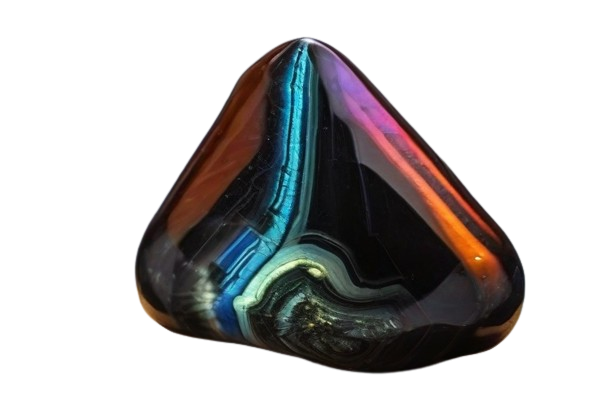
| Property | Description |
|---|---|
| Name | Rainbow Obsidian |
| Composition | Volcanic glass, primarily composed of silicon dioxide (SiO₂), with inclusions that create a rainbow-like sheen. |
| Color | Generally black, with a characteristic iridescent play of colors resembling a rainbow. |
| Crystal System | Amorphous (lacks a crystal structure) |
| Hardness | 5 – 5.5 on the Mohs scale |
| Luster | Vitreous |
| Transparency | Opaque |
| Cleavage | None |
| Fracture | Conchoidal |
| Specific Gravity | 2.35 – 2.38 |
| Streak | White |
| Occurrence | Found in volcanic regions and areas with past volcanic activity. |
| Uses | – Ornamental Use: Carved into beads, cabochons, and figurines for jewelry and ornamental items. |
| – Metaphysical Beliefs: Associated with grounding and protecting the aura, enhancing meditation. |
4.Sheen Obsidian:
Sheen obsidian has an amazing metallic glow, akin to that of a rock. It’s distinctive due to its glossy, metallic sheen, which has everyone talking. The low-down on this: sheen obsidian traps these tiny gas bubbles in the glass during its rapid cool-down. You know, it’s kind of like a cosmic bubble party.
- Bubbles Forming Thin Layers:
- The bubbles in sheen obsidian form incredibly thin layers, contributing to its unique visual appeal.
- Captivating Glow from Interaction with Light:
- Sheen obsidian’s captivating glow is explained to result from the interaction of light with the thin layers of bubbles, creating a mesmerizing effect.
- Secret Light Show Within:
- The stone is metaphorically described as having a secret light show within, adding an element of mystery and fascination to its appearance.
- Interaction with Parallel Layers of Crystals or Minerals:
- The captivating effect is attributed to how light interacts with the parallel layers of crystals or minerals within the glass.
- Party Trick of Light:
- The interaction of light with these layers is likened to a “party trick,” where light reflects and refracts, producing a dazzling display of colors.
- Mesmerizing Display of Colors:
- The result of light interacting with the layers is described as a mesmerizing display of colors, emphasizing the visual allure of sheen obsidian.
- Resemblance to a Disco Ball:
- The stone is metaphorically compared to a disco ball, highlighting its dynamic and colorful appearance reminiscent of a festive atmosphere.
- More Than Just a Stone:
- Sheen obsidian is portrayed as more than just a stone, suggesting that its optical qualities elevate it to a level beyond ordinary gemstones.
- Light Magician Creating an Amazing Display:
- Metaphorically, sheen obsidian is likened to a light magician creating an amazing display, emphasizing its enchanting and magical qualities.
- Primed to Shine:
- Sheen obsidian is characterized as “primed to shine,” emphasizing its inherent ability to stand out and capture attention due to its unique optical properties.
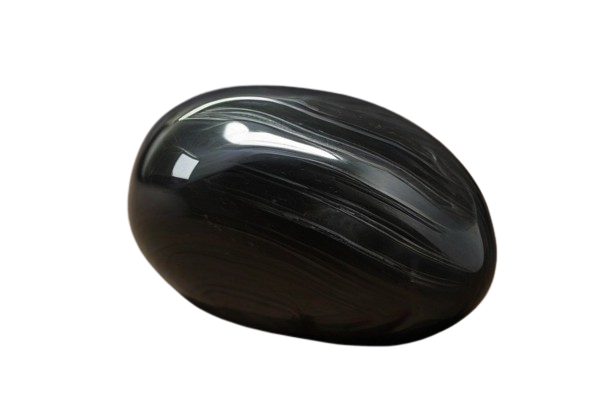
| Property | Description |
|---|---|
| Name | Sheen Obsidian |
| Composition | Volcanic glass, primarily composed of silicon dioxide (SiO₂), with inclusions that create a subtle play of sheen or shimmer. |
| Color | Generally black, with a subtle iridescent or metallic-like sheen. |
| Crystal System | Amorphous (lacks a crystal structure) |
| Hardness | 5 – 5.5 on the Mohs scale |
| Luster | Vitreous |
| Transparency | Opaque |
| Cleavage | None |
| Fracture | Conchoidal |
| Specific Gravity | 2.35 – 2.38 |
| Streak | White |
| Occurrence | Found in volcanic regions and areas with past volcanic activity. |
| Uses | – Ornamental Use: Carved into beads, cabochons, and figurines for jewelry and ornamental items. |
| – Metaphysical Beliefs: Associated with enhancing intuition and psychic abilities. |
5.Snowflake obsidian:
Snowflake obsidian is similar to its artistic cousin, obsidian. This rock has a different vibe than most black ones because it contains tiny white spherulites. And what do you know? These aren’t your average spherulites—rather, they resemble tiny snowflakes that have been frozen in time.
- Cristobalite Crystals Resembling Needles:
- Snowflake obsidian’s unique appearance is attributed to cristobalite crystals, which resemble needles and form a lovely radial pattern.
- Radial Pattern Resembling Delicate Snowflake:
- The cristobalite crystals create a radial pattern that resembles a delicate snowflake, adding to the stone’s aesthetic appeal.
- Frozen Paradise Encased in a Rock:
- Described metaphorically, snowflake obsidian is likened to a frozen paradise encased in a rock, highlighting its visually captivating and distinctive features.
- Crystal Formations Not Arbitrary:
- The formation of cristobalite crystals and the radial pattern are emphasized as not arbitrary but rather influenced by factors such as temperature, cooling rate, and mineral content during volcanic eruption and cooling.
- Works of Art Frozen in Time:
- The resulting crystal formations are metaphorically referred to as “works of art frozen in time,” suggesting the natural beauty and uniqueness preserved within the stone.
- Formula Created by Nature:
- The unique appearance of snowflake obsidian is likened to a “formula created by nature,” underlining the intricate and natural processes that contribute to its formation.
- Active Reputation Establishment:
- Snowflake obsidian is described as actively establishing its reputation, indicating its growing popularity and utilization for sculptures and jewelry.
- Utilized in Sculptures and Jewelry:
- Individuals are using snowflake obsidian in the creation of sculptures and jewelry, allowing the distinctive snowflake patterns to be showcased and appreciated.
- Tiny Snowflakes Visible in Creations:
- The mention of “tiny snowflakes” being visible in creations highlights the specific aesthetic appeal of the cristobalite crystal patterns when incorporated into artistic works.
- Visual Representation of Nature’s Artistry:
- Snowflake obsidian is recognized as a visual representation of nature’s artistry, further emphasizing its role as a unique and aesthetically pleasing natural creation.

| Property | Description |
|---|---|
| Name | Snowflake Obsidian |
| Composition | Volcanic glass, primarily composed of silicon dioxide (SiO₂), with inclusions of cristobalite or feldspar creating snowflake-like patterns. |
| Color | Black with white or gray snowflake-like patterns. |
| Crystal System | Amorphous (lacks a crystal structure) |
| Hardness | 5 – 5.5 on the Mohs scale |
| Luster | Vitreous |
| Transparency | Opaque |
| Cleavage | None |
| Fracture | Conchoidal |
| Specific Gravity | 2.35 – 2.38 |
| Streak | White |
| Occurrence | Found in volcanic regions and areas with past volcanic activity. |
| Uses | – Ornamental Use: Carved into beads, cabochons, and figurines for jewelry and ornamental items. |
| – Metaphysical Beliefs: Thought to bring balance and provide a sense of calmness. |
6.Fire obsidian:
With its iridescent sheen, fire obsidian is similar to the rock that’s bringing the party. We’re discussing “Fire Sheen Obsidian,” and I can assure you that it is an incredible show-stopper. Here’s why this volcanic glass exhibits intense iridescence without any games.
- Brilliant Sheen from Nanoparticles:
- Fire obsidian derives its brilliant sheen from layers of nanoparticles embedded within the silica-rich volcanic glass.
- Rapid Cooling of Silica-Rich Lava:
- The formation involves the rapid cooling of silica-rich volcanic lava, preventing mineral crystals from reaching their maximum size.
- Metaphorical Message to “Stay Small”:
- A metaphorical message is implied, suggesting that the nanoparticles receive instructions from the rock to “stay small” during the cooling process.
- Settling of Nanoparticles on Obsidian Surface:
- Thin layers of nanoparticles choose to settle on the surface of the obsidian as it rapidly cools, creating a unique visual effect.
- Chromatic and Glossy Play of Colors:
- The interaction of these nanoparticles results in a chromatic and glossy play of colors, resembling a captivating light show within the rock.
- Metaphor of a “Little Light Show Stuck in a Rock”:
- The description metaphorically likens the phenomenon to a “little light show that is stuck in a rock,” emphasizing the mesmerizing nature of the visual display.
- Product of Nature’s Magic and Volcanic Eruptions:
- Fire obsidian is portrayed as a product of nature’s magic and volcanic eruptions, highlighting the dynamic and creative forces at play.
- Nanoparticle-Infused and Lava-Cooled Rockstar:
- Fire obsidian is characterized as the “nanoparticle-infused, lava-cooled rockstar of the crystal world,” accentuating its unique and standout qualities.
- Visual Representation of Nature’s Creative Forces:
- The formation of fire obsidian is presented as a visual representation of nature’s creative forces, showcasing the intricate interplay of materials and volcanic processes.
- Dynamic and Mesmerizing Appearance:
- The dynamic and mesmerizing appearance of fire obsidian is underscored, emphasizing its distinctiveness resulting from the interplay of volcanic activity and nanoparticle layers.

| Property | Description |
|---|---|
| Name | Fire Obsidian |
| Composition | Volcanic glass, primarily composed of silicon dioxide (SiO₂), with inclusions that create a play of colors resembling fire. |
| Color | Typically black with vibrant flashes of red, gold, green, or other iridescent colors. |
| Crystal System | Amorphous (lacks a crystal structure) |
| Hardness | 5 – 5.5 on the Mohs scale |
| Luster | Vitreous |
| Transparency | Opaque |
| Cleavage | None |
| Fracture | Conchoidal |
| Specific Gravity | 2.35 – 2.38 |
| Streak | White |
| Occurrence | Found in volcanic regions and areas with past volcanic activity. |
| Uses | – Ornamental Use: Carved into beads, cabochons, and figurines for jewelry and ornamental items. |
| – Metaphysical Beliefs: Thought to enhance creativity and passion. |
7.Apache tears:
Apache tears are little obsidian gems that resemble teardrops that are found in the American Southwest. Imagine them as the obsidian rock stars of the area: round, smooth, and deep black. Water erosion and other natural processes have given these little nodules a makeover in terms of natural beauty over time.
- Tiny, Polished Gems:
- Apache tears are small, polished gems, typically measuring only a few centimeters in size.
- Conchoidal Fracture:
- The unique type of fracture exhibited by apache tears is known as conchoidal fracture, setting them apart from other materials.
- Resemblance to Glassy Materials:
- The fracture pattern resembles the smooth, curved surfaces commonly found in glassy materials, such as obsidian.
- Smooth, Glossy Finish:
- Apache tears feature a smooth, glossy finish, akin to surfaces that appear to have been meticulously carved by nature’s sculptor.
- Tear-Shaped Obsidian Wonders:
- The tear-shaped form of apache tears adds to their distinctive appearance, contributing to their unique and appealing qualities.
- Nature’s Little Sculptor:
- The smooth and glossy finish of apache tears is metaphorically described as if it has been crafted by “nature’s little sculptor,” highlighting the artistic quality of their appearance.
- Unique and Natural Fracture Pattern:
- The conchoidal fracture pattern in apache tears is emphasized as unique and natural, distinguishing them from other gemstones and minerals.
- Small Size and Precise Measurements:
- Apache tears are characterized by their small size, with precise measurements typically only a few centimeters, making them charming and easily portable.
- Distinctive Appearance in Tear-Shaped Form:
- The tear-shaped form contributes to the distinctive appearance of apache tears, making them visually intriguing and appealing to collectors.
- Smooth Surfaces Carved by Nature:
- The analogy of smooth surfaces being carved by nature underscores the natural and artistic qualities of apache tears, enhancing their allure for enthusiasts.

| Property | Description |
|---|---|
| Name | Apache Tears |
| Composition | Usually a form of black obsidian, a volcanic glass composed primarily of silicon dioxide (SiO₂). |
| Color | Typically black or dark brown. |
| Crystal System | Amorphous (lacks a crystal structure) |
| Hardness | 5 – 5.5 on the Mohs scale |
| Luster | Vitreous |
| Transparency | Translucent |
| Cleavage | None |
| Fracture | Conchoidal |
| Specific Gravity | 2.35 – 2.38 |
| Streak | White |
| Occurrence | Typically found in the southwestern United States, associated with volcanic rocks. |
| Uses | – Ornamental Use: Often used in jewelry, carvings, and as polished stones. |
| – Metaphysical Beliefs: Thought to provide comfort and protection, associated with grief healing. |
8.Green obsidian:
Green obsidian is the cool kid of geology—a very alluring and somewhat uncommon volcanic glass. It really is all about the vivid green vibes and an attention-grabbing backstory.
- Formation from Felsic Lava:
- Green obsidian is formed from felsic lava, which is rich in silica, cooling down rapidly during volcanic processes.
- Smooth, Glass-Like Solid:
- The rapid cooling of the lava prevents the formation of crystals, resulting in a smooth, glass-like solid texture.
- Nature’s Preference for Smooth Look:
- Nature appears to favor the smooth, glassy appearance in green obsidian, bypassing the crystal formation process.
- Absence of Crystal Party:
- The lack of time for crystals to form during the rapid cooling process is metaphorically described as skipping the crystal party.
- Trace Minerals as Sidekicks:
- Cool mineral sidekicks like serpentine and chlorite, along with other trace minerals, contribute to the rich green color of the obsidian.
- Expressing a Hint of Green Magic:
- Green obsidian is personified as expressing, “I’m not just glass; I’ve got a hint of green magic going on,” highlighting its unique coloration.
- Rich Green Color Origins:
- The striking green color of obsidian is attributed to the presence of trace minerals, adding depth and uniqueness to its appearance.
- Geological Superstar:
- Green obsidian is recognized as a rare geological superstar that defies conventional expectations with its cool hues and volcanic origins.
- Rock with Style and Mystery:
- Described as resembling a rock with a lot of style and a hint of mystery, green obsidian stands out as a visually intriguing and distinctive gemstone.

| Property | Description |
|---|---|
| Name | Green Obsidian (Prase or Praseolite) |
| Composition | Volcanic glass, primarily composed of silicon dioxide (SiO₂), with inclusions causing a green color. |
| Color | Green, ranging from light to dark shades. |
| Crystal System | Amorphous (lacks a crystal structure) |
| Hardness | 5 – 5.5 on the Mohs scale |
| Luster | Vitreous |
| Transparency | Opaque to translucent |
| Cleavage | None |
| Fracture | Conchoidal |
| Specific Gravity | 2.35 – 2.38 |
| Streak | White |
| Occurrence | Found in volcanic regions and areas with past volcanic activity. |
| Uses | – Ornamental Use: Carved into beads, cabochons, and figurines for jewelry and ornamental items. |
| – Metaphysical Beliefs: Associated with promoting spiritual growth, healing, and balance. |
9.Raw Obsidian:
Raw obsidian is really amazing part is that some of it rocks this built-in rainbow effect. It functions similarly to the owner’s bonus feature. Imagine owning this stone and being constantly reminded that, despite all that life throws at you, a rainbow is always waiting to emerge from the shadows or difficulties.
- Cosmic Motivational Speech:
- Raw obsidian is likened to a cosmic motivational speech, instilling a sense of confidence and resilience.
- Feelings of Empowerment:
- The stone is said to make you feel like you can handle anything, providing a source of empowerment and strength.
- Bright Days Ahead Reminder:
- Raw obsidian serves as a reminder of brighter days ahead, encouraging a positive outlook even in challenging times.
- Symbolic Shine Through Obstacles:
- It symbolizes the idea of shining through obstacles, conveying a message of perseverance and resilience.
- More Than Just a Rock:
- Raw obsidian is portrayed as more than just a simple rock, suggesting it holds symbolic and motivational significance.
- Encouragement to Keep Shining:
- The stone encourages individuals to keep shining through difficulties and challenges, reinforcing a sense of inner strength.
- Symbolic Representation of Confidence:
- Raw obsidian is seen as a symbolic representation of confidence, providing a visual and tangible source of motivation.
- Positive Energy Source:
- The stone is considered to radiate positive energy, contributing to a sense of well-being and mental fortitude.
- Cosmic Connection:
- The reference to a cosmic motivational speech implies a connection between the stone and cosmic or universal energies, enhancing its perceived significance.
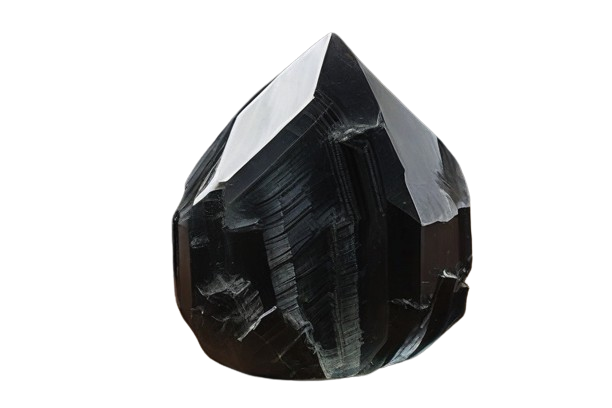
| Property | Description |
|---|---|
| Name | Raw Obsidian |
| Composition | Volcanic glass, primarily composed of silicon dioxide (SiO₂). |
| Color | Typically black, but can also be brown, green, red, or other colors depending on impurities. |
| Crystal System | Amorphous (lacks a crystal structure) |
| Hardness | 5 – 5.5 on the Mohs scale |
| Luster | Vitreous |
| Transparency | Opaque |
| Cleavage | None |
| Fracture | Conchoidal |
| Specific Gravity | 2.35 – 2.38 |
| Streak | White |
| Occurrence | Found in volcanic regions and areas with past volcanic activity. |
| Uses | – Ornamental Use: Often left in its natural state for decorative purposes, or used in artistic creations. |
| – Tool Use: Historically used for cutting and shaping objects due to its sharp edges. | |
| – Metaphysical Beliefs: Associated with protection and grounding. |
10.Obsidian Tumbled:
Tumbled obsidian is similar to the unknowing meditation ally. The main goal is to assist us in making the connections between our higher selves and our spirit. And what do you know? the entire toppled object? It’s the key to an incredible meditation session—not just a feeling.
- Versatile Placement:
- Tumbled obsidian can be placed anywhere, whether on a table, in a crib, tucked into a pocket, or slipped under a pillow, providing versatility in its use.
- Portability:
- The stone’s portability allows it to be carried around in a bag, serving as a constant companion wherever you go.
- Pocket Full of Optimism:
- Carrying tumbled obsidian is likened to having a “pocket full of optimism,” suggesting that it radiates positive energy.
- Meditation Companion:
- Having tumbled obsidian close during meditation is believed to elevate thoughts to a different plane, contributing to a sense of crystal wisdom.
- Safety and Upliftment:
- Tumbled obsidian is described as providing crystal wisdom that keeps you safe and raises your spirits, implying a positive and uplifting influence.
- More Than Just a Rock:
- The stone is portrayed as more than just a rock, emphasizing its broader significance in fostering a connection and maintaining optimism.
- Cosmic Companion:
- Tumbled obsidian is considered a cosmic companion, suggesting a connection to cosmic energies and a sense of guidance.
- Ensuring Connection and Optimism:
- The stone is said to ensure that you always remain connected and optimistic, aligning with its perceived metaphysical properties.
- Positive Influence:
- Tumbled obsidian is associated with a positive influence on thoughts, emotions, and overall well-being.
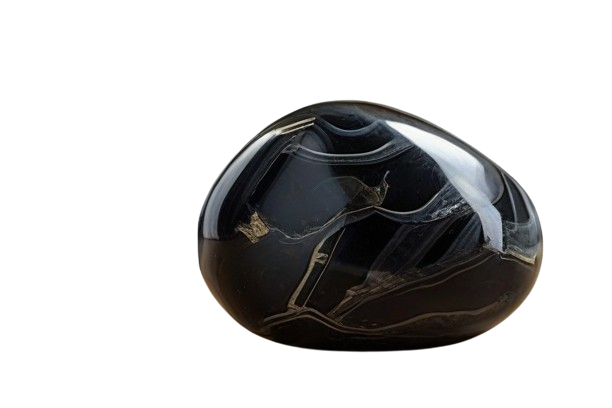
| Property | Description |
|---|---|
| Name | Obsidian Tumbled Stones |
| Composition | Volcanic glass, primarily composed of silicon dioxide (SiO₂). |
| Color | Typically black, but can also be brown, green, red, or other colors depending on impurities. |
| Crystal System | Amorphous (lacks a crystal structure) |
| Hardness | 5 – 5.5 on the Mohs scale |
| Luster | Vitreous |
| Transparency | Opaque |
| Cleavage | None |
| Fracture | Conchoidal |
| Specific Gravity | 2.35 – 2.38 |
| Streak | White |
| Occurrence | Found in volcanic regions and areas with past volcanic activity. |
| Uses | – Ornamental Use: Tumbled stones are polished and used as decorative pieces or in jewelry. |
| – Metaphysical Beliefs: Associated with protection, grounding, and absorbing negative energies. |
Birthstone and Zodiac Sign:
The connection between this stone and particular birthstones and zodiac signs is, you know, kind of fascinating. That being said, black obsidian is the way to go for my Sagittarius folks. Imagine that the powerful planet Jupiter and the element Fire govern the ninth astrological sign, the Archer, which is the zodiac symbol.
- Generosity:
- Sagittarians are known for their generous nature, often going above and beyond to help others.
- Honesty:
- Honesty is a key trait of Sagittarians, as they value transparency and straightforward communication.
- Bravery:
- The brave spirit of Sagittarians reflects in their willingness to take risks and face challenges head-on.
- Kindness:
- Kindness is a defining characteristic, as Sagittarians show compassion and empathy toward others.
- Higher Goals and Ideals:
- Individuals born under Sagittarius are driven by higher goals and ideals, seeking meaning and purpose in their pursuits.
- Optimism:
- Sagittarians are inherently optimistic, maintaining a positive outlook even in challenging situations.
- Unselfish Giving:
- The Sagittarius way involves unselfish giving, demonstrating a selfless attitude in relationships and interactions.
- Passion for Travel:
- A love for travel is a common trait among Sagittarians, reflecting their adventurous and exploratory spirit.
- Sharp Sense of Humor:
- Sagittarians possess a sharp sense of humor, contributing to their ability to build and sustain relationships with friends and family.
- Maintaining Relationships:
- Their unselfishness, humor, and optimistic nature contribute to Sagittarians’ ability to maintain strong relationships with both friends and family.

Now, let’s discuss Snowflake Obsidian, which is the birthstone for November-born Scorpios. Scorpios are a fiery group of people who exude power and energy, so they truly appreciate the benefits this stone offers. For them, it’s like getting a power boost that increases their fervor, fidelity, and independence. Scorpios, who are born between October 23 and November 21st, are known for their unwavering drive, which enables them to succeed in anything they set their minds to.
Connection to Chakras:
Now let’s explore the properties of these stone and how it can help heal chakras. With the root chakra located at the base of the spine, this incredible stone is particularly effective at balancing the energy centers in our bodies.
- Grounding Energy:
- Obsidian serves as an energy ally by grounding individuals, connecting them to the stabilizing energy of the earth.
- Restoring Equilibrium:
- It aids in restoring equilibrium, helping to balance both physical and emotional aspects of well-being.
- Bringing Stability:
- Obsidian contributes to a sense of stability, providing a solid foundation in the face of life’s challenges.
- Sense of Security:
- This stone instills a sense of security, offering a protective energy that promotes feelings of safety.
- Physical Healing:
- Obsidian is associated with physical healing, contributing to the overall well-being of the body.
- Emotional Healing:
- It extends to emotional healing, aiding in the release of negative emotions and fostering a sense of emotional well-being.
- Connection to Earth’s Energy:
- Obsidian establishes a connection to the energy of the earth, creating a harmonious link between the individual and the natural world.
- Root Chakra Association:
- Often linked to the root chakra, obsidian aligns with the colors red and black, symbolizing a strong connection to the earth, grounding energy, and a fierce love for life.
- Hidden Weapon for Inner Stability:
- Possessing obsidian is akin to having a hidden weapon for inner stability, providing strength during challenging times.
- Harmony and Balance:
- Working with obsidian brings individuals into a realm of harmony and balance, fostering overall well-being for both the body and mind.
Adding obsidian to the mixture is like pulling on a massive reservoir of energy. You’re entering a realm of harmony and balance for both your body and mind; you’re not just working with a stone. It’s similar to possessing an obsidian-style hidden weapon for inner stability and zen.
How To Cleanse?
An this stone can be cleaned in a variety of ways. Use any type of running water—salted or otherwise—or even rainwater.
| Cleaning Method | Procedure | Considerations |
|---|---|---|
| Running Water | Clean this stone under running water, but avoid prolonged exposure as it may alter the color. | Be cautious not to soak it for an extended period to prevent color changes. |
| Salt Water | Give it a quick rinse in salt water, especially if obtained from the sea, and avoid sunlight exposure afterward. | After saltwater cleaning, refrain from exposing the obsidian to direct sunlight to maintain its appearance. |
| Rainwater | Use natural rainwater for cleaning to help the stone regain energy. | Opt for natural rainwater for a more beneficial impact on the stone’s energy. |
| Mild Soap & Rinse | Clean with mild soap, wiping it with a soft cloth, and rinse thoroughly. | Ensure the soap has mild ingredients, and avoid brushing the obsidian. Rinse it well to remove any soap residue. |
| Mist Sprays | Safely use mist sprays designed for stone cleaning to maintain its original properties. | Mist sprays often contain ingredients that help preserve the stone’s characteristics and effects. |
You can give the this stone a reset and help it to restore its energies and powers by using these cleaning techniques. Because every method has subtle differences, it’s critical to select the one that best suits your tastes and the particular requirements of this stone.
Origin:
| Region | Countries/States | Significant Deposits of Black Obsidian |
|---|---|---|
| Countries | United States, Canada, Mexico, Guatemala, Argentina, Chile, Greece, Hungary, Italy, Iceland, Russia, New Zealand, Japan, Kenya | Significant deposits of black obsidian can be found in these areas. |
| States (US) | Arizona, California, Idaho, Washington, Nevada, New Mexico, Oregon, Wyoming, Hawaii, Alaska | These states are known for the presence of obsidian. |
| Eastern US States | Virginia, Pennsylvania, North Carolina | Deposits of obsidian stones can be found in these Eastern U.S. states |
Where to buy :
| Shop Name | Description | Location |
|---|---|---|
| Mystic Journey Crystals | A unique gallery offering museum-quality crystals and geodes directly from South American mines. Large crystals and geodes for sale. | 2921 Main Street, Santa Monica, CA 90405 |
| Crystalis Treasures | Highly recommended for deals in custom healing bracelets, stone hearts, angels, etc. | 306 Elden Street, Herndon, VA 20170 |
| Green Earth Stones | All-in-one crystal shop providing various stones, crystals, gemstones, incense, and metaphysical items. | 1701 US 31 W Bypass, Bowling Green KY 42101 |
Uses:
It has been employed historically for a number of purposes, such as:
| Application | Description |
|---|---|
| Tools and Weapons | This stone is hard and easily flaked into sharp blades, making it ideal for tools and weapons. Blades were used for cutting, slicing, and as projectile points for arrows and spears. |
| Jewelry | Beautiful and eye-catching, this stone has been used for jewelry, including beads, pendants, and earrings, found in archaeological sites worldwide. |
| Ornamental Objects | Used to craft decorative items like mirrors, figurines, and sculptures. Obsidian mirrors were employed in religious ceremonies and divination by civilizations like the Maya and Aztec. |
| Traditional Medicine | In traditional medicine, obsidian is believed to have healing properties and has been used to treat various ailments such as headaches, stomachaches, and snakebites. |
| Scientific Applications | Used in surgery and microsurgery, obsidian scalpels are sharp and precise, making delicate incisions. Obsidian is also used to make microtomes, aiding in tissue slicing for microscopic examination. |
It proves to be a versatile material utilized for tools, jewelry, ornamental objects, traditional medicine, and scientific applications.
Conclusion:
This stone is a remarkable and complex gem that has transcended its geological origins and grown to play a significant role in human history and culture. Obsidian has been a seamless part of our lives, from its initial use as tools and weapons to its decorative value in jewelry and other decorative items.
Beyond its beauty, obsidian is an essential component of holistic therapies, especially in chakra healing, where it harmonizes with the root chakra to promote emotional balance, stability, and grounding. The complex dance of hues, especially red and black, represents a deep connection to the earth’s grounding forces in addition to a passion for life.The smooth surfaces and sharp edges of obsidian tell a story of resilience and versatility as we traverse the domains of spirituality, tradition, and science. Its centuries-old healing, protective, and inspirational properties are a testament to the unwavering spirit of those who wield it.
Obsidian is essentially more than just a stone; it is a silent storyteller that bears witness to the continuing bond that exists between people and the natural world. Thus, whether peering into the depths of a polished obsidian mirror or using its healing properties, we are able to marvel at the remarkable gem’s timeless beauty and feel a connection to the ancient echoes of our ancestors.
FAQs:
Q1.How is obsidian formed, and what does it mean?
Natural volcanic glass called obsidian is created when lava cools quickly. It is a distinctive gemstone because of its special qualities and appearance.
Q2. How was obsidian used by prehistoric societies?
Obsidian was used by prehistoric societies to make jewelry, weapons, tools, and decorative items. Because of its versatility and sharp edges, it was perfect for a variety of uses.
Q3.What therapeutic and spiritual qualities is obsidian known for?
Obsidian is associated with the root chakra in chakra healing and provides emotional stability, grounding, and well-being. It is thought to support harmony and balance in both the body and the mind.
Q4.Are certain colors of obsidian linked to particular qualities?
Indeed, the root chakra’s colors of black and red, which stand for grounding and passion for life, enhance the healing properties of the stone.
Q5.How can the advantages of this stone be applied to everyday life?
That stone can be used in meditation techniques, worn as jewelry, or placed in particular spaces as decoration. Because of its many uses, it is suitable for a wide range of lifestyles.

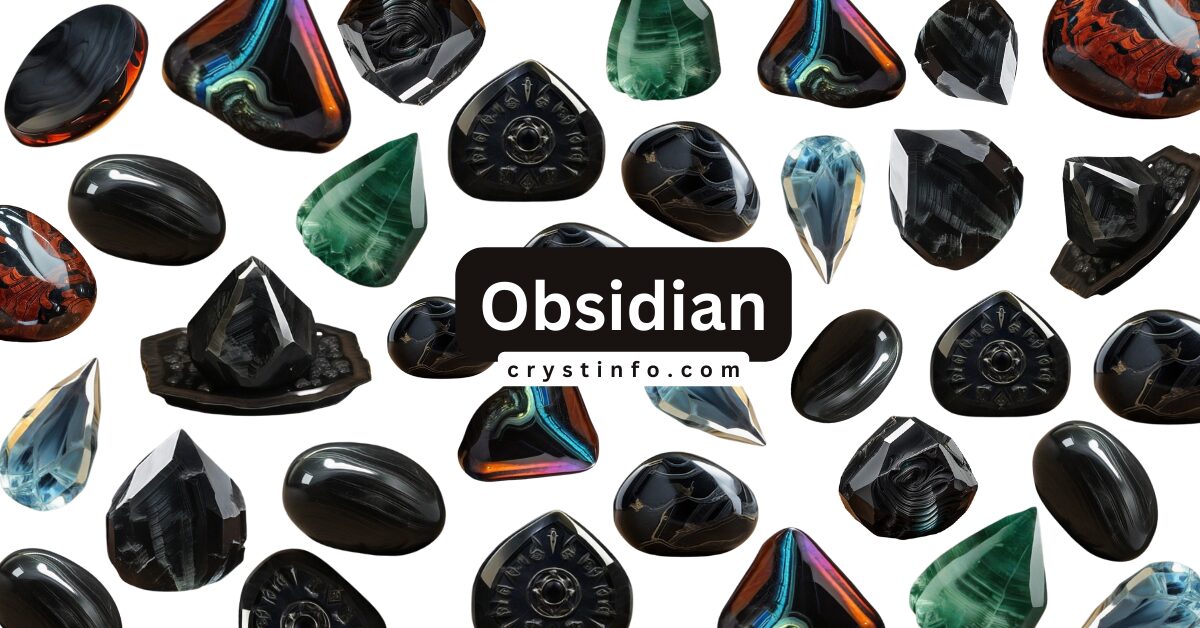

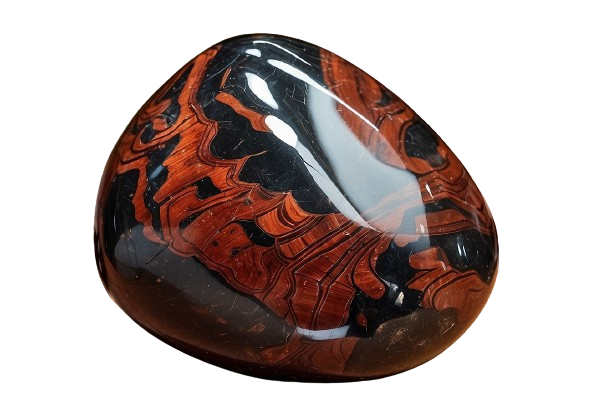

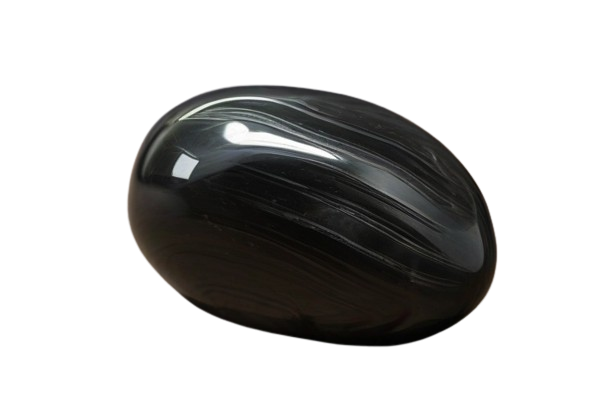
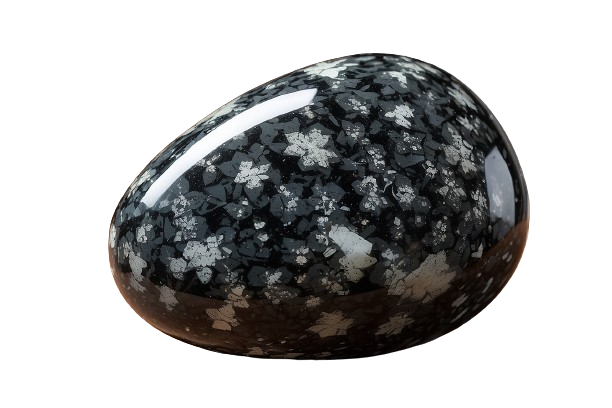
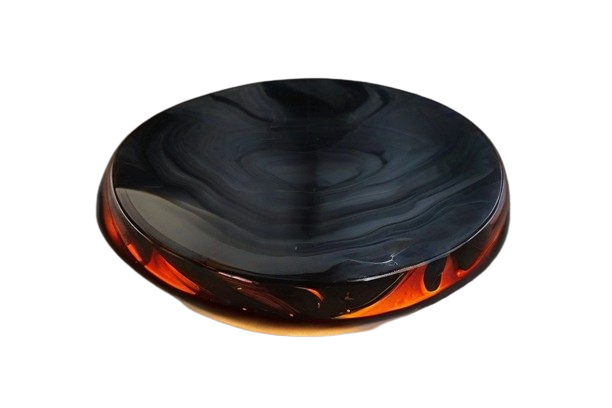
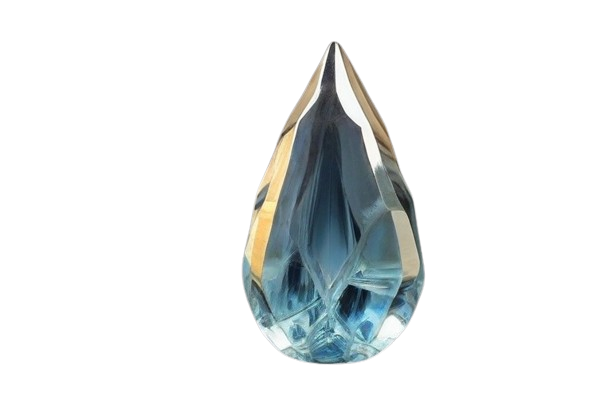
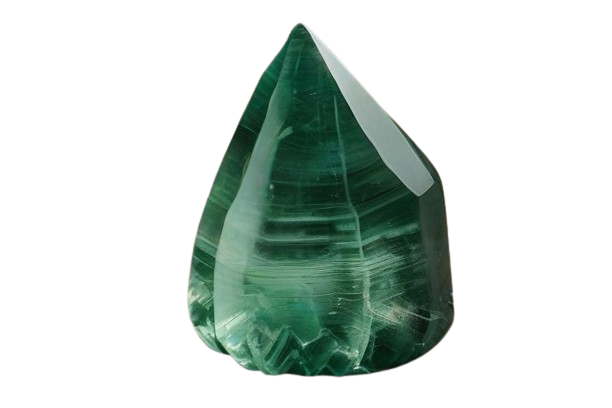

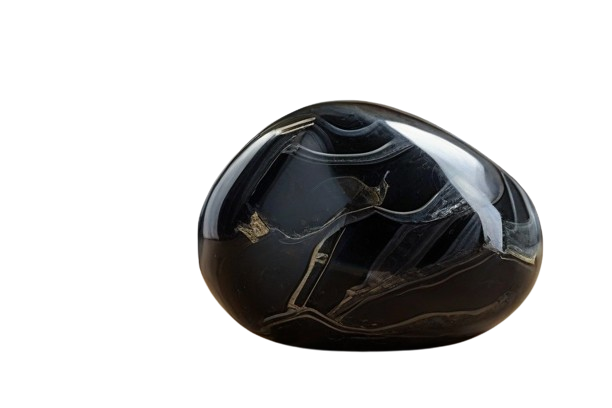
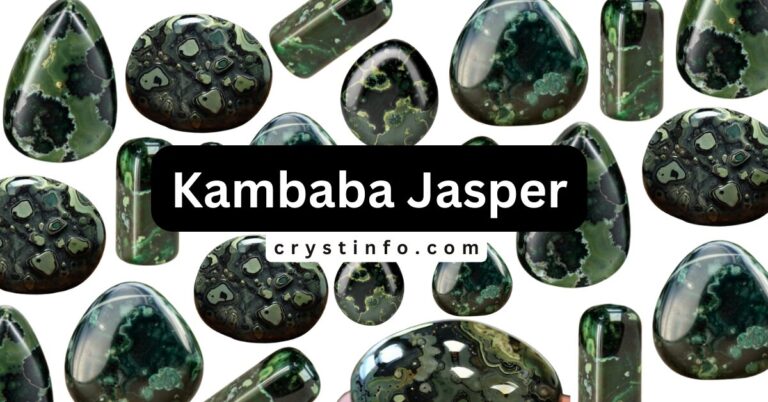
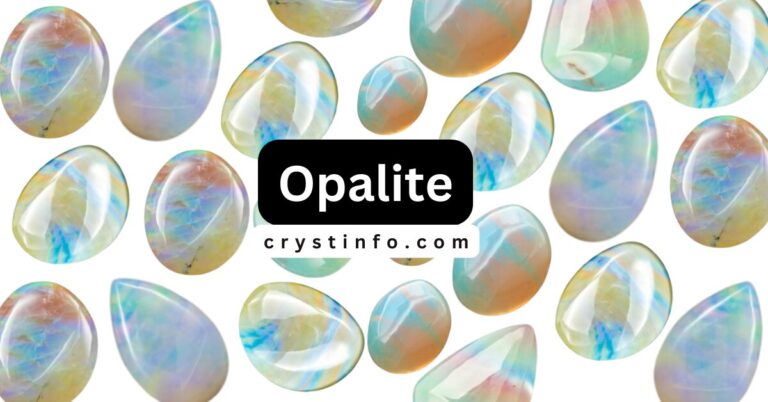
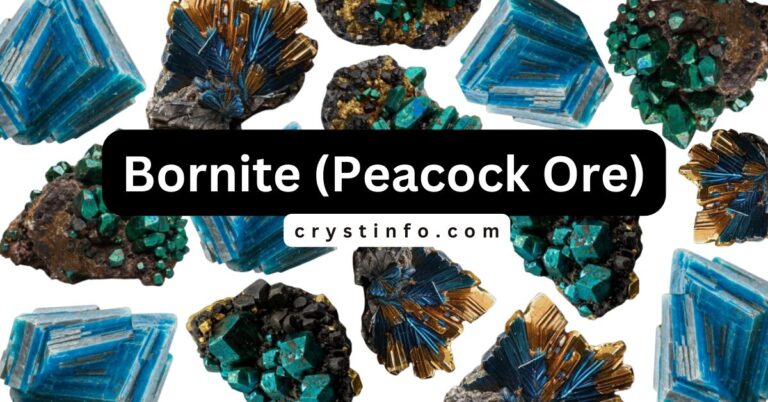
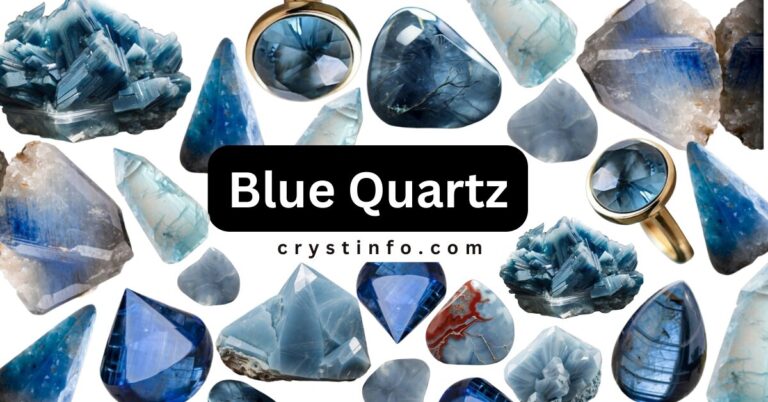

![Ocean Jasper: Explore Spiritual Healing and Energies [Guide]](https://crystinfoz.com/wp-content/uploads/2023/12/Add-a-heading-16-768x402.jpg)